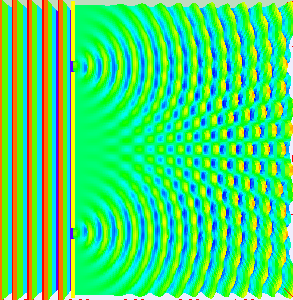Eastern and Western Modes of Thought – Nagarjuna and Quantum Physics
SCIENCE - SPIRITUALITY, 6 Jun 2016
Christian Thomas Kohl – TRANSCEND Media Service
- ‘Emptiness’. The Indian philosopher Nagarjuna ( 2nd century CE ) is known in the history of Buddhism mainly by his keyword ‘sunyata’. This word is translated into English by the word ‘emptiness’. The translation and the traditional interpretations create the impression that Nagarjuna declares the objects as empty or illusionary or not real or not existing. What is the assertion and concrete statement made by this interpretation? That nothing can be found, that there is nothing, that nothing exists? Was Nagarjuna denying the external world? Did he wish to refute that which evidently is? Did he want to call into question the world in which we live? Did he wish to deny the presence of things that somehow arise? My first point is the refutation of this traditional translation and interpretation.
- ‘Dependence’ or ‘relational view’. My second point consists in a transcription of the keyword of ‘sunyata’ by the word ‘dependence’. This is something that Nagarjuna himself has done. Now Nagarjuna’s central view can be named ‘dependence of things’. Nagarjuna is not looking for a material or immaterial object which can be declared as a fundamental reality of this world. His fundamental reality is not an object. It is a relation between objects. This is a relational view of reality. Reality is without foundation. Or: Reality has the wide open space as foundation.
- ‘Arm in arm’. But Nagarjuna did not stop there. He was not content to repeat this discovery of relational reality. He went on one step further indicating that what is happening between two things. He gave indications to the space between two things. He realised that not the behaviour of bodies, but the behaviour of something between them may be essential for understanding the reality. This open space is not at all empty. It is full of energy. The open space is the middle between things. Things are going arm in arm. The middle might be considered as a force that bounds men to the world and it might be seen as well as a force of liberation. It might be seen as a bondage to the infinite space.
- Philosophy. Nagarjuna, we are told, was a Buddhist philosopher. This statement is not wrong when we take the notion ‘philosophy’ in a deep sense as a love to wisdom, not as wisdom itself. Philosophy is a way to wisdom. Where this way has an end wisdom begins and philosophy is no more necessary. A.N. Whitehead gives philosophy the commission of descriptive generalisation. We do not need necessarily a philosophical building of universal dimensions. Some steps of descriptive generalisation might be enough in order to see and understand reality. There is another criterion of Nagarjuna’s philosophy. Not his keywords ‘sunyata’ and ‘pratityasamutpada’ but his 25 philosophical examples are the heart of his philosophy. His examples are images. They do not speak to rational and conceptual understanding. They speak to our eyes. Images, metaphors, allegories or symbolic examples have a freshness which rational ideas do not possess. Buddhist dharma and philosophy is a philosophy of allegories. This kind of philosophy is not completely new and unknown to European philosophy. Since Plato’s allegory of the cave it is already a little known. (Plato 424 – 348 BC) The German philosopher Hans Blumenberg has underlined the importance of metaphors in European philosophy.
- Quantum Physics. Why quantum physics? European modes of thought had no idea of the space between two things. They were bound to the ideas of substance or subject, two main metaphysical traditions of European philosophical history, two main principles. These substances and these subjects are two immaterial bodies which were considered by traditional European metaphysics as lying, as a sort of core, inside the objects or underlying the empirical reality of our world. The first European scientist who saw with his inner eye the forces between two things had been Michael Faraday (1791-1867). Faraday was an English scientist who contributed to the fields of electromagnetism. Later physicists like Albert Einstein, Niels Bohr, Erwin Schrödinger, Werner Heisenberg and others followed his view in modern physics. This is a fifth point of my work. I compare Nagarjuna with European scientific modes of thought for a better understanding of Asia. I do not compare Nagarjuna with European philosophers like Hegel, Heidegger, Wittgenstein. The principles and metaphysical foundations of physical sciences are more representative for European modes of thought than the ideas of Hegel, Heidegger and Wittgenstein and they are more precise. And slowly we are beginning to understand these principles. Let me take as an example the interpretation of quantum entanglement by the British mathematician Roger Penrose. Penrose discusses in the year of 2000 the experiences of quantum entanglement where light is separated over a distance of 100 kilometers and still remains connected in an unknown way. These are well known experiments in the last 30 years. Very strange for European modes of thought. The light should be either separated or connected. That is the expectation most European modes of thought tell us. Aristotle had been the first. Aristotle (384 – 322 CE) was a Greek philosopher, a student of Plato and a teacher of Alexander the Great. He told us: Either a situation exists or not. There is not a third possibility. Now listen to Roger Penrose: “Quantum entanglement is a very strange type of thing. It is somewhere between objects being separate and being in communication with each other” (Roger Penrose, The Large, the Small and the Human Mind, Cambridge University Press. 2000 page 66). This sentence of Roger Penrose is a first step of a philosophical generalisation in a Whiteheadian sense.
- ‘The metaphysical foundations of modern science’had been examined particularly by three European and American philosophers: E. A. Burtt, A.N. Whitehead and Hans-Georg Gadamer, by Gadamer eminently in his late writings on Heraclitus and Parmenides. I try to follow the approaches of these philosophers of anti-substantialism. By ‘metaphysical foundations’ I do not understand transcendental ideas but simply the principles that are underlying sciences.
- ‘Complementarity’, ‘interactions’, ‘entanglements’. Since 1927 quantum physics has three key terms which give an indication to the fundamental physical reality: Complementarity, interactions and entanglement. These three notions are akin to Nagarjuna’s relational view of reality. They are akin and they are very precise, so that Buddhism might learn something from these descriptions and quantum physicists might learn from Nagarjuna’s examples and views of reality. They might learn to do a first step in a philosophical generalisation of quantum physical experiments. All of us we might learn how objects are entangled or going arm in arm.
 ______________________________
______________________________
Christian Thomas Kohl is lecturer. He has studied the history and philosophy of sciences at the Universities of Paris and Berlin and in 1973 he graduated in political science. He tries to follow the approaches of Edwin Arthur Burtt and Alfred North Whitehead. His core areas of research are the metaphysical foundations of quantum physics and Early Buddhism and the philosophy of Nagarjuna who lived in the second century of Current Era. Since the 1980s, he has been interested in the philosophy and history of Early Indian and Chinese Buddhism. Since 1990, he has been working as a lecturer of history of sciences and languages in Switzerland and France. During the past three decades he has worked on ‘reconciling’ the fundamental principles of quantum physics and Buddhist philosophy
Download pdf file:Nagarjuna and Quantum Physics – Eastern and Western Modes of Thought
To continue reading please Go to Original – ctkohl.googlepages.com
DISCLAIMER: The statements, views and opinions expressed in pieces republished here are solely those of the authors and do not necessarily represent those of TMS. In accordance with title 17 U.S.C. section 107, this material is distributed without profit to those who have expressed a prior interest in receiving the included information for research and educational purposes. TMS has no affiliation whatsoever with the originator of this article nor is TMS endorsed or sponsored by the originator. “GO TO ORIGINAL” links are provided as a convenience to our readers and allow for verification of authenticity. However, as originating pages are often updated by their originating host sites, the versions posted may not match the versions our readers view when clicking the “GO TO ORIGINAL” links. This site contains copyrighted material the use of which has not always been specifically authorized by the copyright owner. We are making such material available in our efforts to advance understanding of environmental, political, human rights, economic, democracy, scientific, and social justice issues, etc. We believe this constitutes a ‘fair use’ of any such copyrighted material as provided for in section 107 of the US Copyright Law. In accordance with Title 17 U.S.C. Section 107, the material on this site is distributed without profit to those who have expressed a prior interest in receiving the included information for research and educational purposes. For more information go to: http://www.law.cornell.edu/uscode/17/107.shtml. If you wish to use copyrighted material from this site for purposes of your own that go beyond ‘fair use’, you must obtain permission from the copyright owner.
Read more
Click here to go to the current weekly digest or pick another article:
SCIENCE - SPIRITUALITY:

